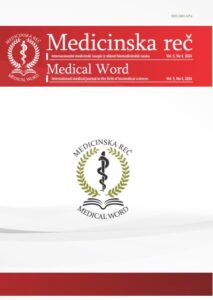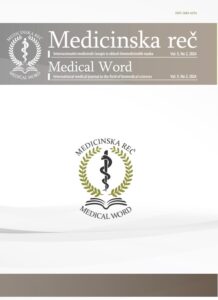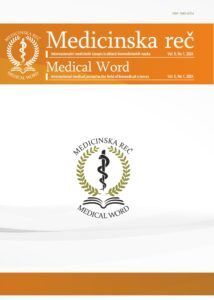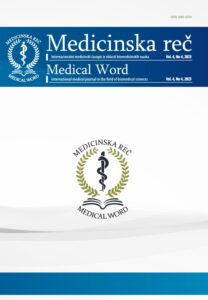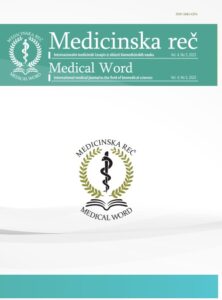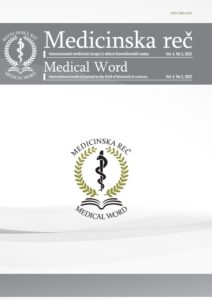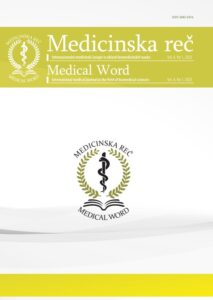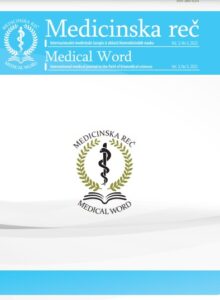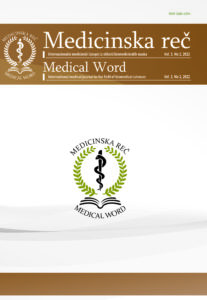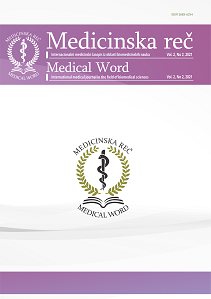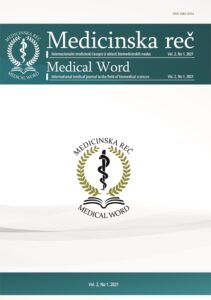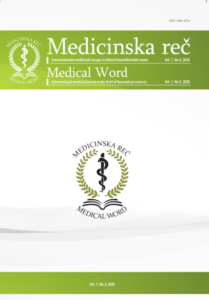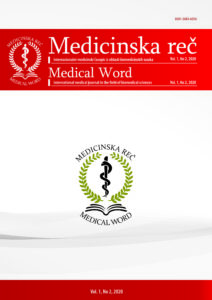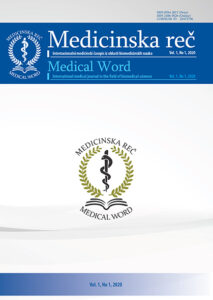Differential diagnosis of lymphadenopathy
Nenad N. Govedarović, Rade R. Babić
Med Word 2020; 1(3): 101–108
https://doi.org/10.5937/medrec2003101G
Abstract
The majority of patients presenting with peripheral lymphadenopathy have easily identifiable causes that are benign or self-limited. Among primary care patients presenting with lymphadenopathy, the prevalence of malignancy has been estimated to be as low as 1.1 %. The critical challenge for the primary care physician is to identify which cases are secondary to malignancies or other serious conditions. Key risk factors for malignancy include older age, firm, fixed nodal character, duration of greater than two weeks, and supraclavicular location. Knowledge of these risk factors is critical to determining the management of unexplained lymphadenopathy. In addition, a complete exposure history, review of associated symptoms, and a thorough regional examination help determine whether lymphadenopathy is of benign or malignant origin. Unexplained lymphadenopathy without signs or symptoms of serious disease or malignancy can be observed for one month, after which specific testing or biopsy should be performed. While modern hematopathologic technologies have improved the diagnostic yields of fine-needle aspiration, excisional biopsy remains the initial diagnostic procedure of choice.
Key words: lymphadenopathy, differential diagnosis
References
-
- Ferrer R. Lymphadenopathy: differential diagnosis and evaluation. Am Fam Physician 1998; 58: 1313-20.
- Mohseni S, Shojaiefard A, Khorgami Z, Alinejad S, Ghorbani A, Ghafouri A. Peripheral Lymphadenopathy: Approach and Diagnostic Tools. Iran J Med Sci Supplement 2014; 39(2): 158-70.
- Shrestha AK, Chalise PR, Shrestha ML. Lymph node biopsies: a hospital based retrospective study. JNMA J Nepal Med Assoc 2009; 48: 306-9.
- Mohan A, Reddy MK, Phaneendra BV, Chandra A. Aetiology of peripheral lymphadenopathy in adults: analysis of 1724 cases seen at a tertiary care teaching hospital in southern India. Natl Med J India 2007; 20: 78-80.
- Mohapatra PR, Janmeja AK. Tuberculous lymphadenitis. J Assoc Physicians India 2009; 57: 585-90.
- Viiala N, Gibson J [Internet] An approach to the assessment of lymphadenopathy: [cited 2007 Jan 10]: http://www.medicalobserver.com.au/news/an-approach-to-the-assessment-of-lymphadenopathy.
- Leung AK, Davies HD. Cervical lymphadenitis: etiology, diagnosis and management. Curr Infect Dis Rep. 2009; 11:183-9.
- Naz E, Mirza T, Aziz S, Danish F, Siddiqui ST, Ali A. Frequency and clinicopathologic correlation of different types of non Hodgkin’s lymphoma according to WHO classification. J Pak Med Assoc 2011; 61: 260-3.
- Abba A, Khalil M. Clinical approach to Lymphadenopathy. Ann Nigerian Med 2012; 6(1): 11-7.
- Bazemore A, Smucker D. Lymphadenopathy and Malignancy. Am Fam Physician 2002; 66(11): 2103-10.
- Hurt C, Tammaro D. Diagnostic Evaluation of Mononucleosis-Like Illnesses. Am J Med 2007; 120: 911.
- Khanna R, Sharma AD, Khanna S, Kumar M, Shukla RC. Usefulness of ultrasonography for the evaluation of cervical lymphadenopathy. World J Surg Oncol 2011; 9:29.


